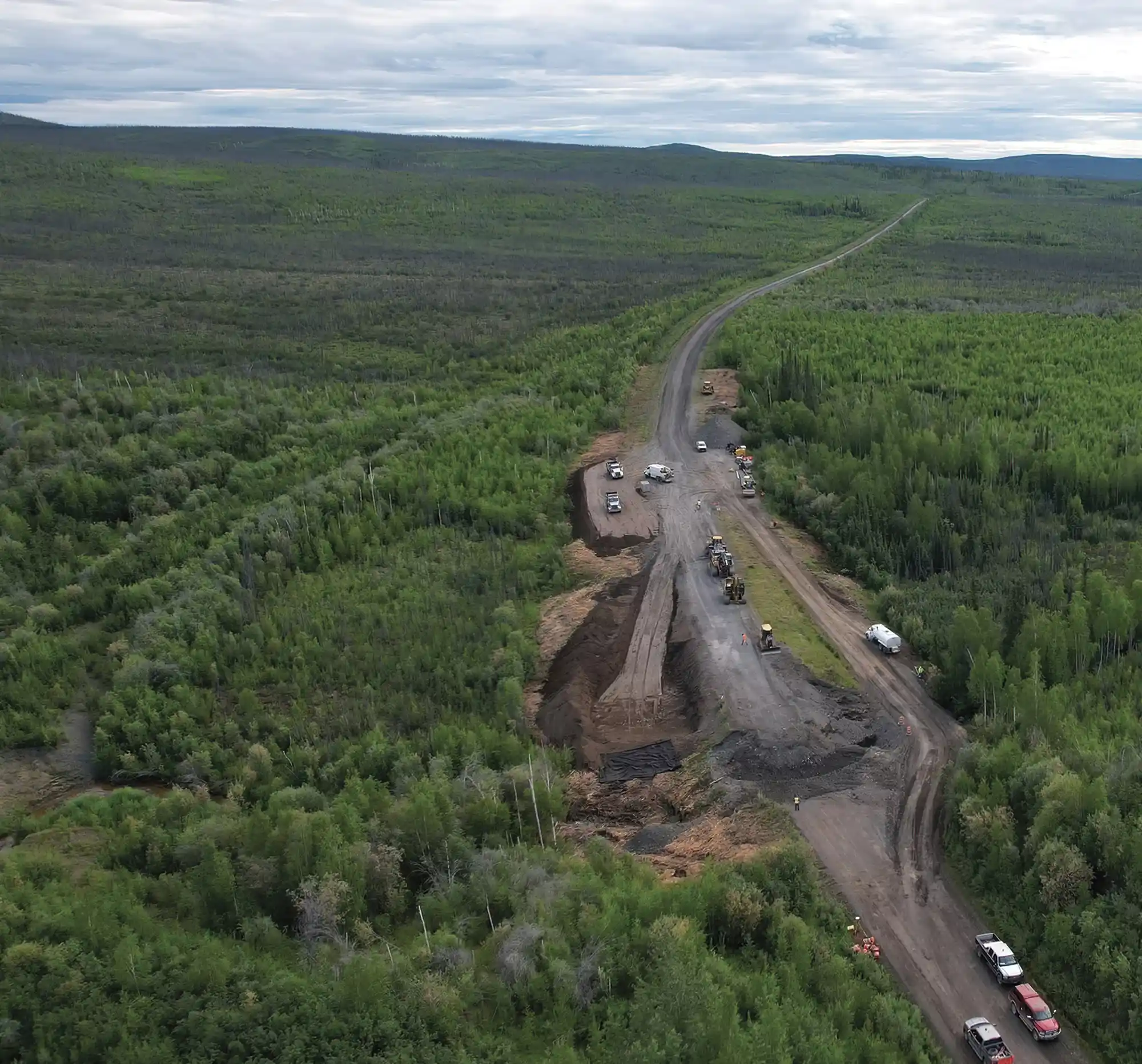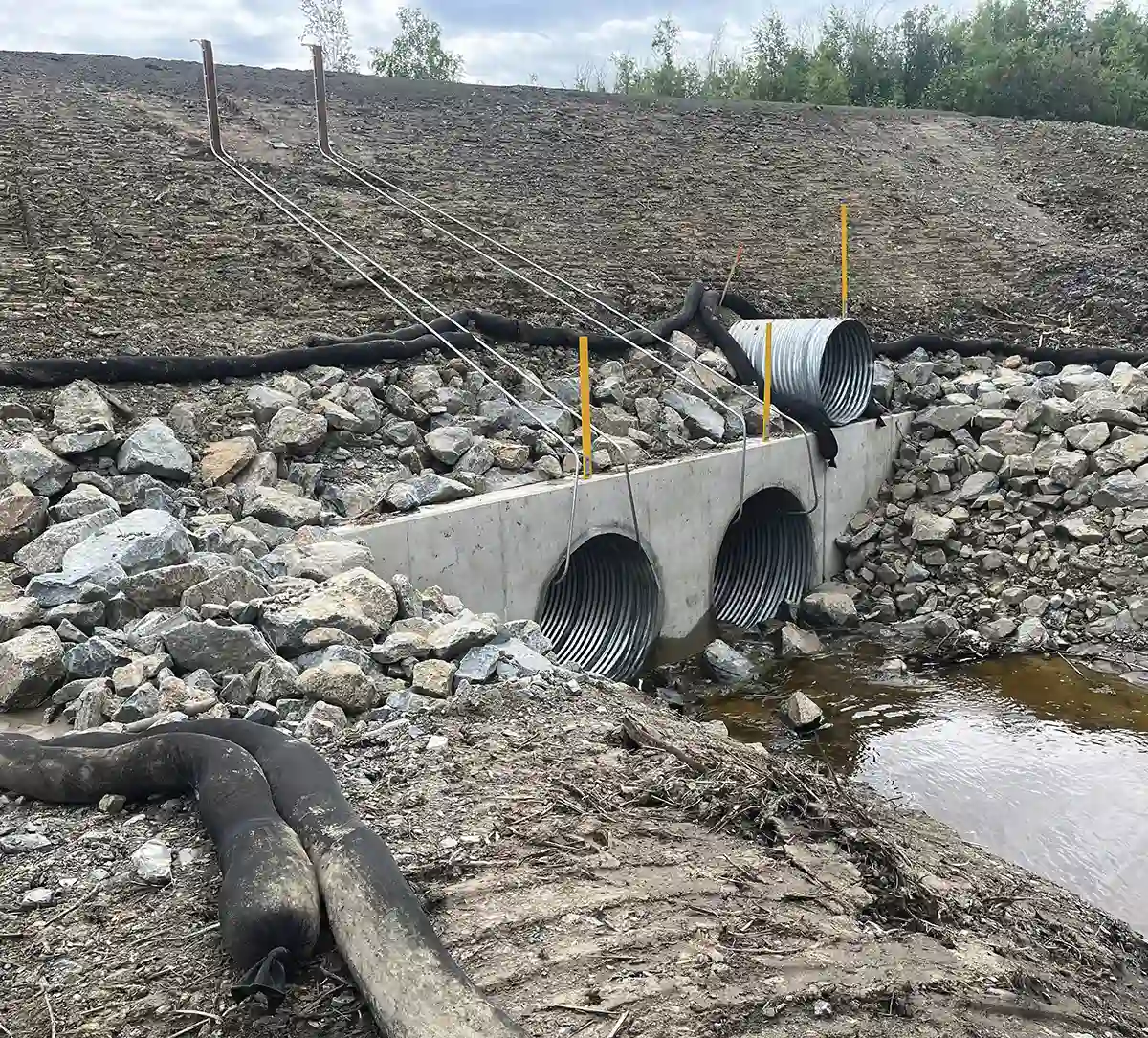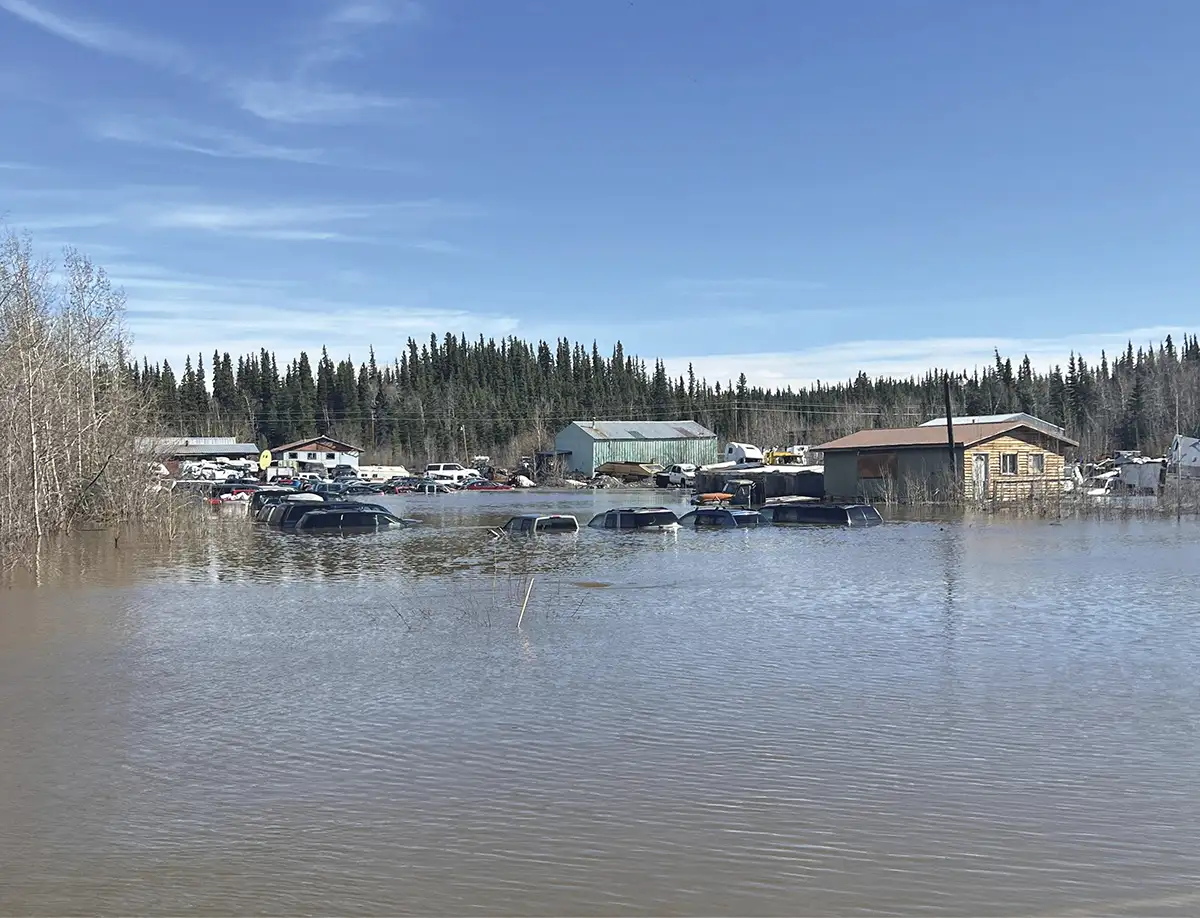Photo provided by Great Northwest, Inc.

Photo provided by Great Northwest, Inc.
mergency repair projects generally don’t make headlines unless they’re large and part of a natural disaster, such as Typhoon Merbok in 2022 or the 2018 magnitude 7.1 earthquake that shook Southcentral Alaska. However, for every large-scale emergency project, at least a dozen smaller ones are tackled by contractors working with the Alaska Department of Transportation and Public Facilities, or DOT&PF. In the Northern Region, twenty-two emergency projects were completed quickly in 2023 thanks to a statewide provision allowing simplified procurement procedures.
“Maintenance stations are located anywhere from 50 to 100 miles apart on the roadways,” says DOT&PF Northern Region Construction Engineer Mike Lund. “Crews are out on the roads and checking facilities at regular intervals. They know potentially problematic areas since they are familiar with the area.”

Photo provided by Great Northwest, Inc.
DOT&PF has an extensive procurement and contracting process for non-emergency projects, where contractors submit bids for advertised projects. In emergencies, Lund says the process is still formal, though abbreviated. Sole-source procurement for emergency projects requires DOT&PF to fill out a waiver that justifies the reason for forgoing the regular procurement process and outlines the contract terms. Selecting a contractor for emergency repairs depends on the nature of the emergency, nearby contractors working on other DOT&PF projects, and the resources necessary to complete repairs.
Granite is a construction contractor and construction materials producer with locations across the United States, including offices in Anchorage. It provides services throughout Alaska, focusing on heavy civil infrastructure projects that include earthmoving, paving, bridges, and drainage work.

Photo provided by Granite Construction, Inc.
Granite crews mobilized to Glennallen within a few hours of notification. When crews arrived, water was flowing across the highway in several locations. They installed 16-inch dewatering pumps to move the water from one side of the highway to the other so traffic could resume safely.
- Alaska Department of Transportation & Public Facilities, or ADOT&PF, Maintenance crews
- ADOT&PF Maintenance crews
- Granite Construction

- Alaska Demolition

- ADOT&PF Maintenance crews
- ADOT&PF Maintenance crews
- Great Northwest, Inc.

- Heritage Trucking
- Carpenter Contracting, Inc.

- ADOT&PF Maintenance crews
- Brice, Inc.

- ADOT&PF Maintenance crews
- Granite Construction

- ADOT&PF Maintenance crews
- Cruz Construction

- ADOT&PF Maintenance crews
- Hamilton Construction

- Great Northwest, Inc.

- ADOT&PF Maintenance crews
- ADOT&PF Maintenance crews
![]() indicates Associated General Contractors of Alaska member.
indicates Associated General Contractors of Alaska member.
“The biggest challenge we had was pumping the water down so we could install the new drainage culverts without causing more erosion to the Glenn Highway,” says Granite Construction Manager Marty Thurman. “Once the water had subsided, the project was pretty straightforward, and we were able to complete it rather quickly.”
The emergency repairs in Glennallen cost $540,000 and included the price of all labor, equipment, and materials needed for the project. Thurman says Granite appreciates its partnership with the Alaska DOT&PF and is always willing to help.
“We were 20 or 30 miles away with people and equipment that we transferred over to complete the emergency repair,” says GNI Project Superintendent Jim Conlon.
Crews worked in a 25-foot-deep excavation to block the headwall of two culverts and pump out the water so they had a dry area to replace the culvert and repair the embankment. Conlon says the situation was most likely due to an aging culvert that failed. The cost of the repairs has not yet been finalized.

Photo provided by Great Northwest, Inc.
In both cases, the emergency repairs were permanent solutions. Lund says if issues weren’t addressed entirely, DOT&PF would likely have further evaluated the problem, designed a solution, and advertised the project as part of the regular procurement process.
Payment for emergency repairs varies depending on whether there is a state or federal government declaration of emergency. Lund adds that this is true of emergency projects in other regions within the state.